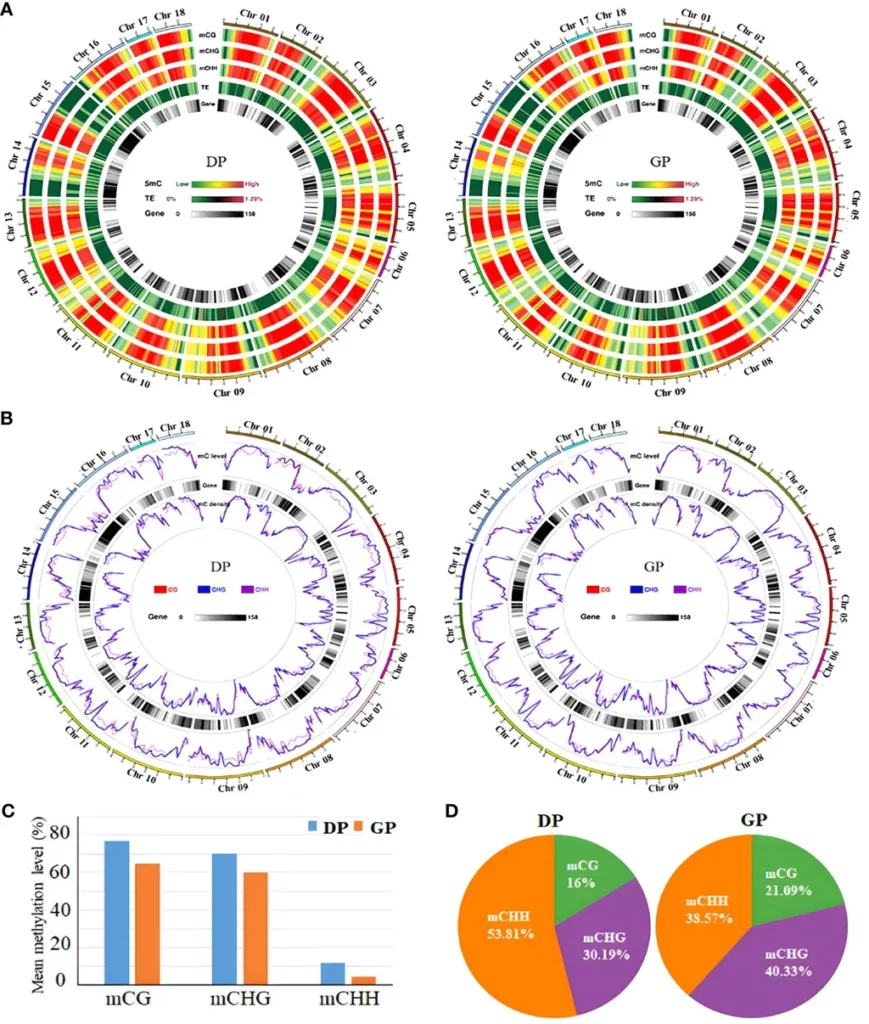In the heart of agricultural innovation, a groundbreaking study has unveiled the intricate dance of DNA methylation in rubber trees, offering a glimpse into the epigenetic mechanisms that could revolutionize the industry. Researchers, led by Yuanyuan Hao from the State Key Laboratory of Tropical Crop Breeding, have identified 13 DNA methyltransferase (MTase) genes in the rubber tree genome, each playing a pivotal role in the regulation of gene expression and biological processes.
The study, published in the journal ‘Plants’, employed phylogenetic analysis to classify these genes into four subfamilies: MET1, CMT, DRM, and DNMT2. Notably, the DRM subfamily exhibited a significant expansion, hinting at its unique role in the rubber tree’s evolutionary journey. “Among the four members of the MET1 subfamily, only HbMET1-1 contains the complete UBA and RFD domains, suggesting its critical role in the function of MET1 in plants,” Hao explained. This discovery opens new avenues for understanding the genetic regulation of rubber production.
The research delved into the expression patterns of these MTase genes, revealing that most were expressed at low levels in latex. However, tapping— the process of harvesting latex from the tree—induced a dynamic response. Genes like HbMET1-1 and HbDRM2-1 showed a rapid increase in expression following tapping, while HbCMT3-1 and HbCMT3-2 continued to rise as the process progressed. These findings suggest that tapping, as a form of mechanical stress, triggers specific gene expressions, a discovery that could optimize harvesting practices and boost latex yield.
Subcellular localization analysis added another layer of complexity. HbDNMT2, the only DNA methyltransferase located in the cytoplasm, showed a gradual decrease in expression during tapping. Researchers hypothesize that this gene activates multiple genes involved in rubber biosynthesis, actively participating in the production process. This insight could lead to targeted genetic modifications to enhance rubber yield and quality.
The commercial implications of this research are profound. By understanding the epigenetic responses to tapping, farmers and agritech companies can develop more efficient harvesting strategies, reduce stress on trees, and potentially increase latex production. Moreover, the identification of key genes involved in rubber biosynthesis paves the way for genetic engineering to create high-yield, stress-resistant rubber tree varieties.
This study not only sheds light on the epigenetic regulation of rubber trees but also sets the stage for future advancements in agritech. As Hao and her team continue to unravel the complexities of DNA methylation, the rubber industry stands on the brink of a new era—one where science and agriculture converge to create sustainable, high-yield solutions. The research, published in ‘Plants’ and led by Hao from the State Key Laboratory of Tropical Crop Breeding, marks a significant step forward in the quest to optimize rubber production and meet the growing demands of the global market.

